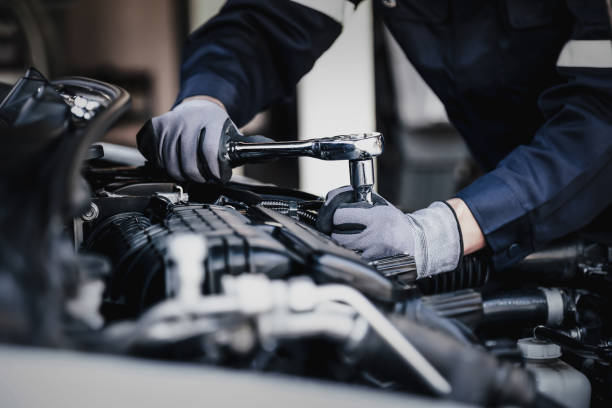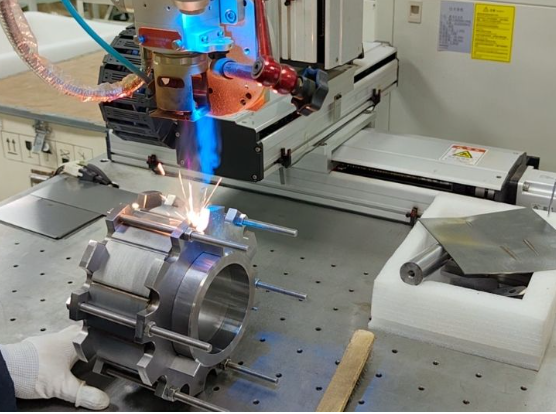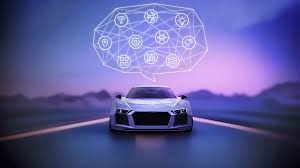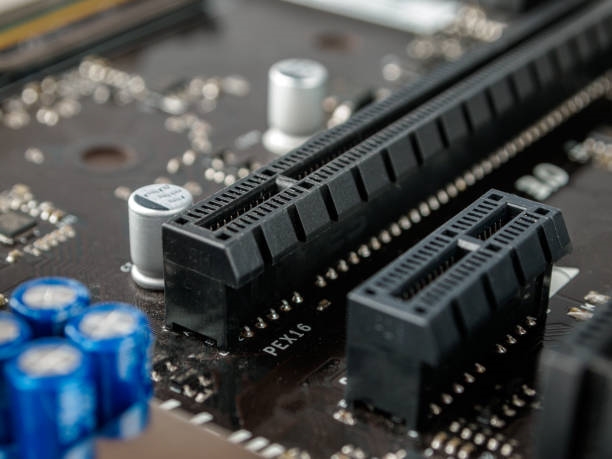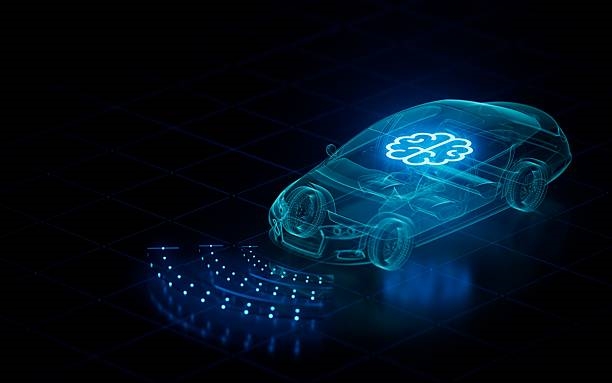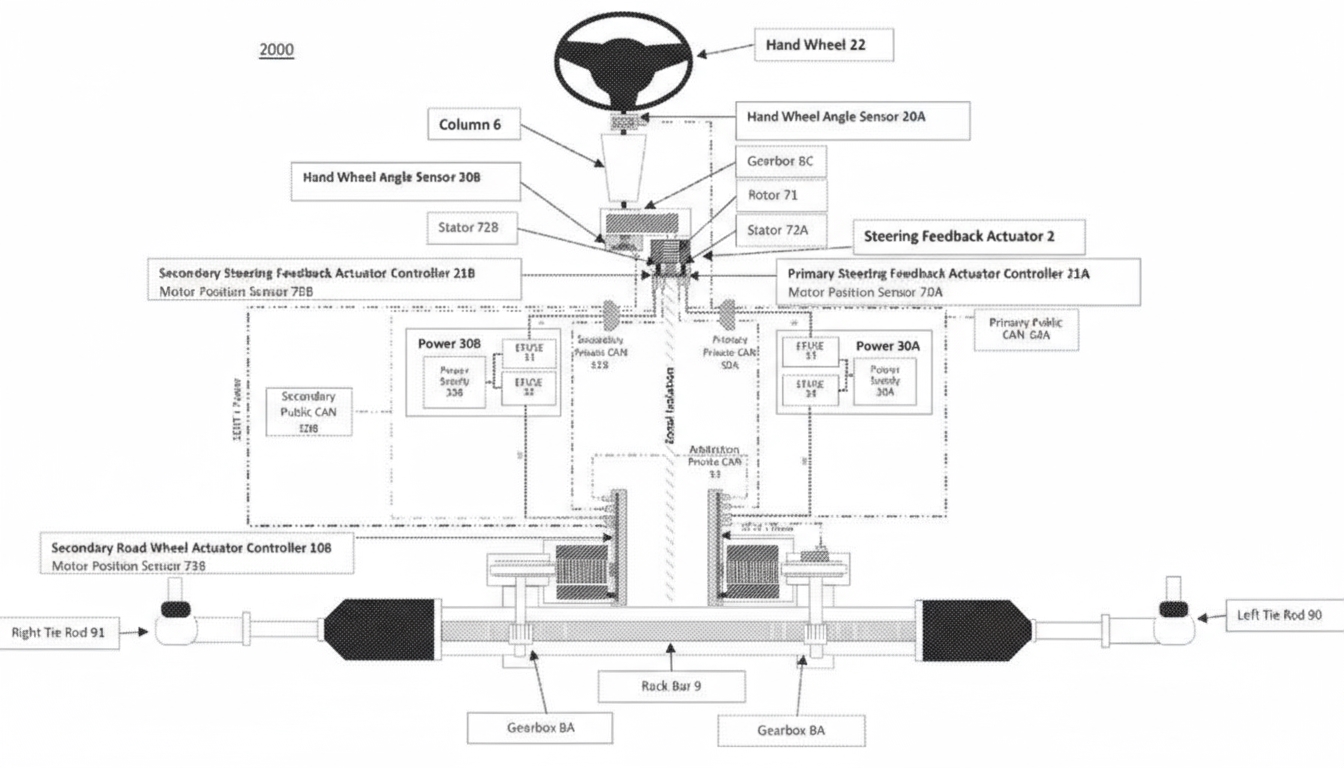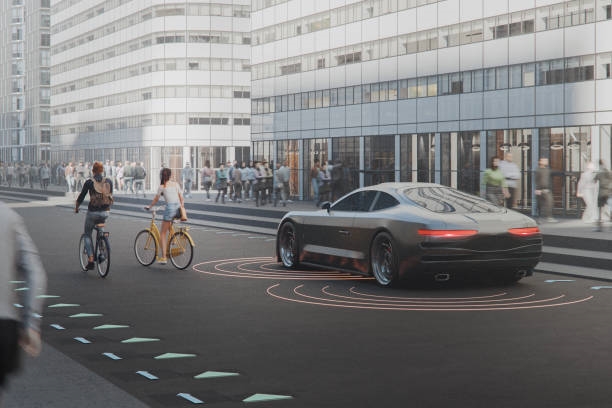Introduction
An engine is the power source of a car, comparable to a human heart. Unlike human hearts, however, internal engine layouts vary widely between vehicle types. This article reviews the key structural differences among common engine types and explains major subsystems and technologies.
Engine Power Source and Cylinder Function
The engine produces power inside its cylinders by converting the chemical energy of fuel into mechanical energy. Fuel combustion in a cylinder creates high pressure that drives the piston up and down. The piston motion is transmitted via connecting rods to the crankshaft, which converts it to rotary motion. That rotary output is then transferred through the transmission and driveshaft to the wheels.
Cylinder Count Considerations
Most passenger cars use four- or six-cylinder engines. While increasing cylinder count can raise power and smoothness, it also increases part count, complexity, manufacturing cost, maintenance cost, and potential reliability issues. High-cylinder configurations such as V12, W12, or W16 are usually reserved for a small number of high-performance cars.
V-Type Engines
A V-type engine arranges adjacent cylinders at an angle to form a V when viewed from the end. Compared with inline engines, V layouts reduce height and length, permitting a lower hood for aerodynamic packaging. The opposing arrangement can cancel some vibration, but V engines require two cylinder heads and therefore have more complex structure. They often become wider, which can limit space for other components in a confined engine bay.
W-Type Engines
A W engine offsets the two banks of a V engine by a small additional angle, creating a W-shaped layout. Advantages over a V engine include a potentially shorter crankshaft and reduced mass, but width increases and the package becomes more crowded. W engines are split into multiple structural sections, increasing complexity and vibration, and so are used only in limited applications.
Horizontally Opposed (Boxer) Engines
In a horizontally opposed engine, adjacent cylinders face each other with a 180° layout. Unlike a 180° V engine, boxer engines generally use individual crank pins (each piston has its own crank journal), and opposing pistons move in opposite directions. Boxer engines naturally cancel many vibrations, have a low center of gravity for a lower hood profile, and align the power output direction with the drivetrain for efficient power delivery. Drawbacks include structural complexity, more difficult maintenance, and higher production cost. Porsche and Subaru remain notable users of boxer engines in passenger cars.
Four-Stroke Cycle
Engines produce continuous power by repeating the four strokes in each cylinder: intake, compression, power, and exhaust. Coordinated timing of these strokes enables continuous output.
Spark Plugs
Spark plugs provide timed ignition of the air-fuel mixture in spark-ignition engines. They generate a high-voltage spark across a small gap between center and side electrodes, causing rapid combustion similar in principle to a lightning discharge.
Intake and Exhaust Valves
To sustain repeated combustion events, cylinders must receive fresh charge and evacuate exhaust gases. Intake and exhaust valves, actuated by the camshaft, perform the timed opening and closing. Intake valves are generally larger than exhaust valves because intake relies on vacuum suction to draw air in, while exhaust is forced out under higher pressure. Increasing intake valve area helps draw more fresh air for combustion.
Valve Count Considerations
Multiple valves per cylinder improve intake flow at high speed and enable cleaner exhaust, improving performance. However, multi-valve layouts are more complex, requiring precise placement of valve actuation, combustion chamber shape, and spark plug. Common practice is four valves per cylinder (2 intake, 2 exhaust) as a balance between performance and complexity.
How Engines "Breathe": Camshafts and Valve Timing
Camshaft Function
A camshaft is a shaft with several cam lobes that open and close intake and exhaust valves. Driven by the crankshaft, cams depress lifters, rocker arms, or followers to actuate valve motion at the correct times.
OHV, OHC, SOHC, DOHC Definitions
OHV (overhead valve) refers to engines with the camshaft located in the block (low), using pushrods to operate valves in the head. OHC (overhead cam) denotes camshafts located in the cylinder head. SOHC (single overhead cam) uses one camshaft to operate both intake and exhaust valves. DOHC (double overhead cam) uses two camshafts in the head, typically one for intake and one for exhaust. Pushrod OHV designs need a pushrod between cam lobe and rocker and are common in large-displacement, low-revving torque-focused engines, while OHC simplifies valve actuation and generally supports higher engine speeds.
Valve Timing and Valve Timing Mechanisms
Valve timing defines when valves open and close. In practice, intake valves are often opened early and closed late to increase cylinder charge, and exhaust valves are opened early and closed late to better evacuate gases. Fixed timing cannot optimally satisfy both low- and high-speed conditions, so variable valve timing (VVT) systems adjust timing according to engine speed and load to improve efficiency and torque across the rev range.
Variable Valve Timing vs Variable Valve Lift
Variable valve timing shifts the opening and closing moments of valves. Variable valve lift changes how far a valve opens, affecting the volumetric flow rate. Timing is analogous to "when the door opens," while lift is "how wide the door opens." Some systems only adjust timing, others adjust lift or both to optimize airflow for different engine speeds and loads.
Factory Variable Valve Systems
Examples of production systems include:
- Toyota VVT-i: adjusts camshaft phase hydraulically within a limited range to advance, retard, or maintain valve timing under ECU control.
- Honda i-VTEC: combines variable timing with variable lift by switching between cam profiles via an additional rocker and cam lobe assembly. At low load the low-lift cam operates the valves; at high load a locking mechanism couples the rocker to a high-lift cam.
- BMW Valvetronic: uses an eccentric shaft, servomotor, intermediate rods, and rocker links to vary valve lift continuously by changing the geometry between cam and valve.
- Audi AVS: switches between two cam profiles by axially shifting a camshaft sleeve that engages either high- or low-lift cams using an electromagnetic actuator, similar in concept to i-VTEC.
Advanced Combustion and Injection Technologies
To meet stricter efficiency and emissions requirements, engines have evolved features such as direct injection, stratified combustion, and variable displacement.
Pistons and Crankshaft Loading
Pistons endure high temperature and pressure while reciprocating at high speed, requiring precise manufacturing and durable materials. The crankshaft converts reciprocating motion into rotation and also drives accessories such as the oil pump and alternator, so it must be robust.
Conversion of Linear to Rotary Motion
The crankshaft offset and connecting rod arrangement translate linear piston motion into rotation, similar to bicycle pedaling where alternating leg force produces continuous rotation of the crank.
Flywheel Purpose
The flywheel stores rotational energy to smooth crankshaft speed because only one of the four piston strokes produces useful work. A comparatively large flywheel maintains rotation through non-power strokes and supports steady operation.
Displacement and Compression Ratio
Displacement is the swept volume from piston top dead center to bottom dead center per cylinder; total engine displacement is the sum across cylinders, usually expressed in liters. Compression ratio is the ratio of cylinder total volume to the combustion chamber volume at top dead center. Higher compression ratios promote more complete and efficient combustion, improving performance and efficiency where fuel knock limits allow.
Variable Displacement
Variable displacement (cylinder deactivation) reduces active cylinder count under light load to save fuel. The system disables valve actuation and fuel delivery for selected cylinders, allowing an engine to operate in different modes such as 3, 4, or 6 cylinders depending on load. Volkswagen's TSI EA211, for example, uses a solenoid actuator and an axially slotted camshaft sleeve to disable valve lift for cylinder deactivation.
Direct Injection
Traditional port-injection sprays fuel into the intake manifold, where some fuel can adhere to surfaces and mixture formation depends on intake flow. Direct injection sprays fuel directly into the cylinder, allowing precise control of fuel quantity and timing via the engine control unit. High-pressure direct injection improves atomization and mixing, enabling leaner, more complete combustion, lower fuel consumption, and often improved torque.
Stratified Combustion (Layered Combustion)
A stratified charge strategy forms a richer mixture near the spark plug while maintaining an overall leaner mixture. For example, during the intake stroke a small pilot injection creates a globally lean mixture, then a second injection near the end of compression produces a richer pocket near the spark plug. Ignition of that richer pocket propagates combustion through the leaner charge, reducing fuel consumption while maintaining stable ignition.
Airflow Control: Throttle and Manifolds
Throttle Valve
The throttle controls the amount of charge entering the engine. Accelerator pedal position governs throttle opening. Modern electronic throttles use pedal sensors and an ECU to interpret driver intent and actuate the throttle motor for precise control, replacing mechanical cable linkages.
Variable Intake Manifold Length
Some intake manifolds include valves that switch between longer and shorter runners to change the effective intake length. Longer paths help low-speed torque by increasing intake air velocity and pressure; shorter paths favor high-speed volumetric flow for top-end power.
Exhaust Manifold Shape
Exhaust manifolds are often irregularly shaped to prevent interference and backflow between cylinders and to optimize pulse scavenging. Design objectives include keeping branch lengths balanced where possible and avoiding turbulent interference that would reduce performance.
Forced Induction: Turbocharging, Supercharging, and Twincharging
Turbocharging
Turbochargers use exhaust gas energy to drive a turbine that spins a compressor, which pressurizes intake air before it enters the cylinders. A turbocharger consists of a turbine wheel, compressor wheel, and a common shaft. Exhaust pulses drive the turbine, which in turn spins the compressor to force more air into the engine, increasing power and torque without directly consuming engine output. Turbochargers may exhibit lag at low engine speeds when exhaust energy is insufficient to quickly accelerate the turbine.
Supercharging
Superchargers are mechanically driven compressors powered directly from the crankshaft. They provide boost at low engine speeds and respond immediately, but they impose a parasitic load on the engine because they draw mechanical power to operate.
Twincharging (Combined Turbo and Supercharger)
Twincharged engines combine a turbocharger and a supercharger to take advantage of each system's benefits. A mechanically driven supercharger provides low-speed boost, while the turbocharger provides high-end boost. This arrangement reduces low-speed lag while preserving high-speed efficiency. Volkswagen's 1.4 TSI is an example where both types of compressors are used together.
Lubrication and Cooling
Lubrication System
Engine components such as crankshaft bearings, camshaft journals, pistons, rings, and cylinder walls require lubrication to reduce wear. Engine oil circulates from the oil pan using an oil pump to pressurize oil to various engine passages. Used oil carries wear particles and contaminants and therefore passes through an oil filter. Regular oil and filter changes are critical to engine longevity.
Cooling System
Modern engines typically use liquid cooling. The cooling system includes a water pump, radiator, cooling fan, expansion tank, thermostat, engine block water jackets, and cylinder head coolant passages. The pump circulates coolant through the water jackets; airflow through the radiator and the fan removes heat before the coolant returns to the engine. The thermostat controls coolant routing between a short warm-up loop and the full radiator loop to maintain optimal operating temperature.
Diesel vs Gasoline Engines
Diesel and gasoline engines differ primarily in fueling and ignition. Conventional gasoline engines typically mix fuel with intake air (except direct-injection gasoline engines) and use spark plugs for ignition. Diesel engines inject fuel directly into highly compressed, hot air and rely on compression ignition. Diesel engines generally operate at higher compression ratios, producing higher thermal efficiency and typically lower fuel consumption compared with gasoline engines.
Rotary (Wankel) Engine
Rotary engines use a triangular rotor that orbits eccentrically within a chamber. The rotor faces form chambers that expand and contract to accomplish intake, compression, combustion, and exhaust. A rotary engine produces a power stroke once per rotor revolution, offering a high power-to-displacement characteristic, but it differs fundamentally in sealing, lubrication, and emissions behavior compared with reciprocating piston engines.
Hybrid Powertrains
Hybrid vehicles combine an internal combustion engine with one or more electric motors. Regenerative braking recovers energy during deceleration and stores it in a battery for later use. Hybrids can be classified as strong (full) hybrids, capable of electric-only propulsion over some conditions, or mild hybrids, where the electric motor only assists the engine and cannot propel the vehicle alone. Strong hybrids focus on larger electric motors and smaller engines for fuel savings, while mild hybrids emphasize support and energy recovery.
Transmissions: Purpose and Types
Why a Transmission Is Necessary
Because starting, climbing, and high-speed cruising require very different torque and speed characteristics, a transmission allows the engine to operate efficiently while providing the appropriate wheel torque and speed. A transmission also enables reverse motion and a neutral state to disconnect engine power.
How Gearboxes Change Torque and Speed
Transmissions vary torque and speed via gear ratios. Different size gear pairs change rotational speed and torque according to mechanical leverage principles.
Common Transmission Types
Transmissions are broadly manual or automatic. Common automatic types include hydraulic torque converter automatics (AT), continuously variable transmissions (CVT), and dual-clutch transmissions (DCT or DSG).
Manual Transmission Structure and Operation
A manual transmission consists of a housing, input and output shafts with gearsets, synchronizers, and shift linkages. Changing gears engages different driven gears on the output shaft via the synchronizer, allowing different gear ratios between input and output. Synchronizers match speeds and reduce engagement shock during shifts. Reverse uses an idler gear to invert output rotation for backward motion.
Synchronizer Function
Synchronizers prevent gear tooth impact during shifts by equalizing rotational speeds before engagement. Typical inertial synchronizers use friction surfaces and a synchronizer ring to bring the gear to the required speed, allowing the engagement sleeve to lock the gear to the shaft smoothly.
Automatic Transmissions: AT, CVT, and DCT (DSG)
Torque Converter Automatics (AT)
Modern ATs use a hydraulic torque converter between the engine flywheel and the gearset. The torque converter transfers engine torque hydraulically via pump and turbine elements filled with transmission fluid. Many ATs include a lock-up clutch to mechanically connect the engine and gearbox at higher speeds to reduce slip and improve efficiency. Gear changes are implemented by engaging clutches and brakes to alter planetary gearset configurations under ECU control via solenoid valves.
Continuously Variable Transmissions (CVT)
CVTs typically use two variable-diameter pulleys connected by a metal belt or chain. Each pulley consists of two conical sheaves forming a V-shaped groove. Hydraulic actuators change the sheave spacing, altering the effective pulley diameter and thus the overall drive ratio continuously. This allows the engine to operate near optimal rpm across a broader range of vehicle speeds.
Dual-Clutch Transmissions (DSG/DCT)
Dual-clutch transmissions use two separate clutches within a single housing to control odd and even gear sets independently. One clutch engages the current gear while the other preselects the next gear, enabling nearly seamless shifts with minimal interruption in torque transfer. For example, a typical 6-speed DCT uses clutch 1 for gears 1, 3, 5 and reverse, and clutch 2 for gears 2, 4, 6. When shifting, one clutch disengages while the other engages, eliminating the torque interruption present in single-clutch manual shifts.
 ALLPCB
ALLPCB


